The late Fifteenth and the Sixteenth Century

In the years between 1480 and 1520 there were extraordinary and unexpected developments in painting in Vicenza, reaching their highest expression in the monumental altar pieces of the church of San Bartolomeo, now housed in the Civic Art Gallery. These grandiose paintings, along with a few other precious works of art, were miraculously saved after the church and the adjoining convent were violated between the eighteenth and the nineteenth century, transformed into hospitals, then razed to the ground in 1838. They are real masterpieces by the same artists – Bartolomeo Montagna, Giovanni Bonconsiglio, Giovanni Speranza de’ Vajenti, Giambattista Cima da Conegliano and Marcello Fogolino – who were to become the prominent figures of Renaissance painting in Vicenza, inaugurated by Montagna himself.
From the second half of the fifteenth century and during the sixteenth, there was therefore a gradual consolidation of the distinctive features of local figurative culture, which was constantly open to innovations and suggestions, especially from Venice. It was in the city on the lagoon, where the greatest exponents of sixteenth-century Veneto painting (Titian, Tintoretto and Veronese) were at work, that the so-called “revolution of light” began in the field of painting, from the middle of the sixteenth century onwards. Artists in fact began to model formsusing chiaroscuro and bringing together clashing colours. The works of Tintoretto and Veronese in the Museum clearly show how light was the real protagonist of painting in that period.
Light effects also played an extremely important role in the masterpieces of the goldsmith from Vicenza, Valerio Belli, “sculptor of light”: the rock crystals on which he engraved sacred episodes, kept in the Museum (Inv. AP I 3; AP I 4), are “absolute points of arrival in the art of engraving” (Villa).
The collection in Palazzo Chiericati also includes sculptures of fine quality dating back to the sixteenth century, such as the Half-bust portrait of Vincenzo Pellegrini (Inv. S 182) sculpted in marble by Alessandro Vittoria and the refined terracotta depicting the Madonna and Child (Inv. S 269) by JacopoSansovino.
Image Gallery
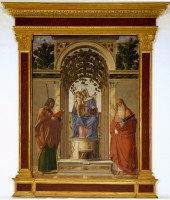 |
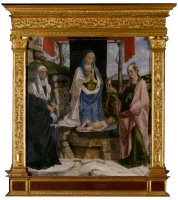 |
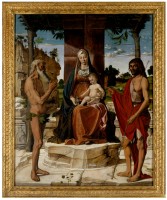 |
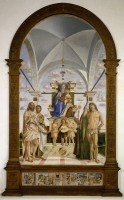 |
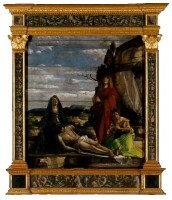 |
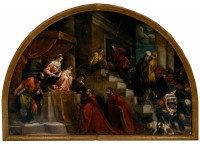 |
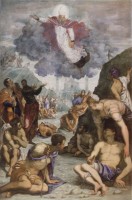 |
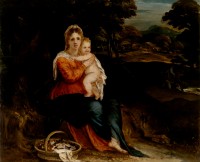 |
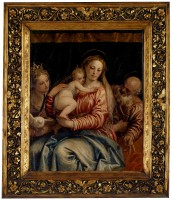 |
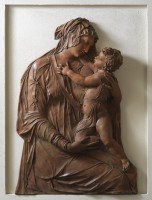 |
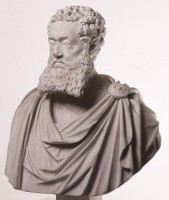 |
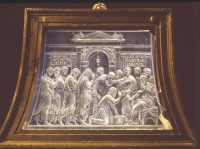 |
- “Maestro della Libreria Sagramoso” Three events in the life of Saint Blaise: 25a Saint Blaise discovered by a deer in a cave; 25b Torture of Saint Blaise; 25c Martyrdom of Saint Blaise
- Giambattista Cima detto da Conegliano Madonna and Child Enthroned between Saint James the Apostle and Saint Jerome
- Bartolomeo Montagna Madonna adoring the Child between Saints Monica and Mary Magdalene
- Bartolomeo Montagna Madonna and Child under a pergola between Saint John the Baptist and Saint Onuphrius
- Bartolomeo Montagna Madonna and Child Enthroned between Saints John the Baptist, Bartholomew, Augustine and Sebastian and three angel musicians
- Bartolomeo Montagna Christ carrying the cross
- Bartolomeo Montagna Presentation of Jesus in the Temple
- Giovanni Bonconsiglio detto Marescalco Mourning of the dead Christ
- Giovanni Speranza de’ Vajenti The Virgin assumed in a glory of angels; at the top the Eternal Father; at the bottom Saints Thomas and Jerome
- Marcello Fogolino Adoration of the Magi; on the predella: Annunciation, Nativity, Flight into Egypt
- Marcello Fogolino Saint Francis of Assisi receiving the stigmata between Saints Clare and Peter, Blessed Bartholomew of Breganze (?) and Saints Paul and Bernardine
- Jacopo Dal Ponte, detto Bassano Adoration of the Child and the angels with the instruments of the Passion
- Jacopo Dal Ponte, detto Bassano The Rectors of Vicenza Silvano Cappello and Giovanni Moro kneeling before the Madonna enthroned between Saint Mark and Saint Vincent
- Prospero Fontana Holy Family with Saint Elizabeth and the young Saint John
- Giovanni Demio Adoration of the Magi
- Giovanni Antonio Fasolo Portrait of Giuseppe Gualdo with his sons Paolo and Paolo Emilio
- Jacopo Robusti, detto Tintoretto Saint Augustine healing the lame
- Giovanni Antonio Fasolo Portrait of Paola Bonanome Gualdo with her daughters Laura and Virginia
- Lambert Sustris Rest on the Flight into Egypt
- Paolo Caliari, detto Veronese Madonna and Child, a holy martyr and Saint Peter
- Alessandro Maganza The Flagellation
- Paolo Caliari, detto Veronese Winged putto
- Francesco Dal Ponte, detto Bassano Portrait of a warrior with a girl
- Leandro Dal Ponte, detto Bassano The Wedding Feast at Canaa
- Jacopo Tatti detto Sansovino Madonna and Child
- Alessandro Vittoria Half-bust portrait of Vincenzo Pellegrini
- Valerio Belli The Washing of the Feet
- Valerio Belli The Road to Calvary

